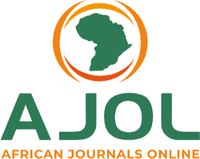KNOWLEDGE, ATTITUDE AND PERCEPTION OF TERTIARY EDUCATION STUDENTS TOWARDS PEOPLE LIVING WITH HIV/AIDS IN GOMBE STATE
DOI:
https://doi.org/10.56892/bima.v3i01.123Keywords:
HIV, Tertiary students, Knowledge, Attitude, Perception, Gombe.Abstract
Knowledge, attitudes and perceptions concerning HIV/AIDS is one of the fundamental steps in the
fight against the illness. Young people such as students are most susceptible to the disease because
they are most sexually active and engage in risky practices due to lack of adequate information.
Therefore, assessing their knowledge, attitudes and perceptions will help in designing a suitable
prevention strategy. The aim of this study is to explore the level of knowledge, attitude and
perception of students in higher institutions of learning towards HIV/AIDS and people living with
HIV/AIDS (PLWHA). Through a cross-sectional study and stratified random sampling, we
administered a pilot-tested standard questionnaire to assess the HIV/AIDS knowledge, attitudes and
perceptions of 356 tertiary education students aged 18-46 years in Gombe State, Nigeria. Data were
analyzed using STATA 10 statistical software. Four hundred students were approached to complete
the questionnaires, 44 did not return their questionnaires. The mean age of the 356 participating
students was 23.09±4.86 years (SD=4.86). The male to female ratio was 2:1. Over 90% of the
students were aware of HIV/AIDS, and mass media (39.6%) and teachers (38.5%) were their major
sources of information about disease. More than half of the students (60.6%) were willing to live
with PLWHA and about two third of the (69.5%) wouldn’t like students living with HIV/AIDS
(SLWHA) to be educated in a separate school and (80%) would want all students to go for annual
mandatory HIV testing. Although, most of the students have satisfactory knowledge about
HIV/AIDS, and positive attitude and perception towards PLWHA, some misconceptions still exist
among the students about the source of acquiring the disease.Educational programs and strategies
involving schools and youth’s networks should be employed to overcome these misconceptions.





